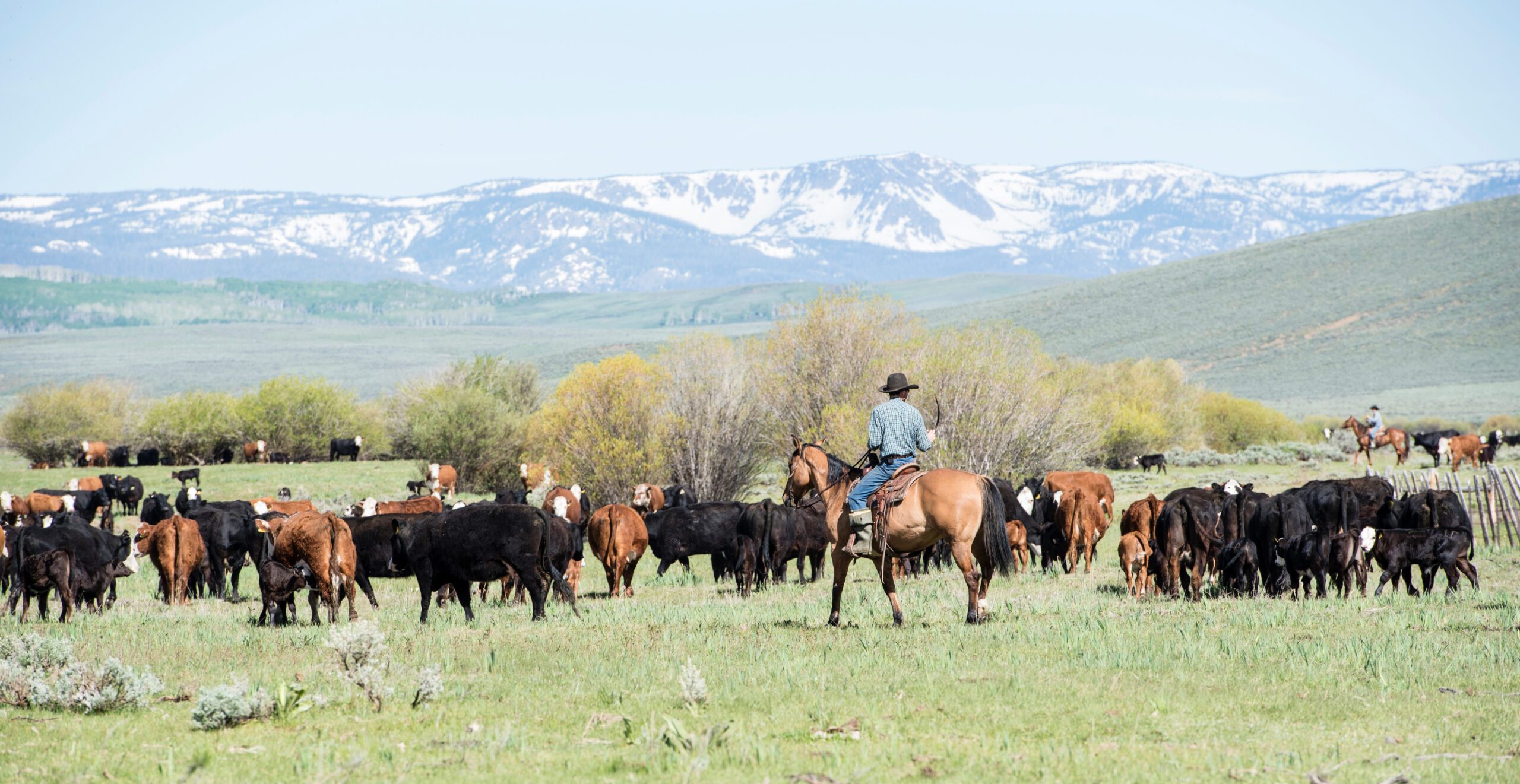This article describes the history of the American Cowboy and cattle drives in the western United States.
The era of the cowboy in American legend lasted but a brief period of time during the nineteenth century. Earlier, Spanish colonist had discovered that much of the land in what is now southwestern United States was not suitable for agriculture due to inadequate rainfall, but they learned that the vast grasslands were ideal for cattle herding. These Spanish pioneers introduced the long-horned cattle, founded the first ranchos and hired mounted vaqueros to tend their herds.
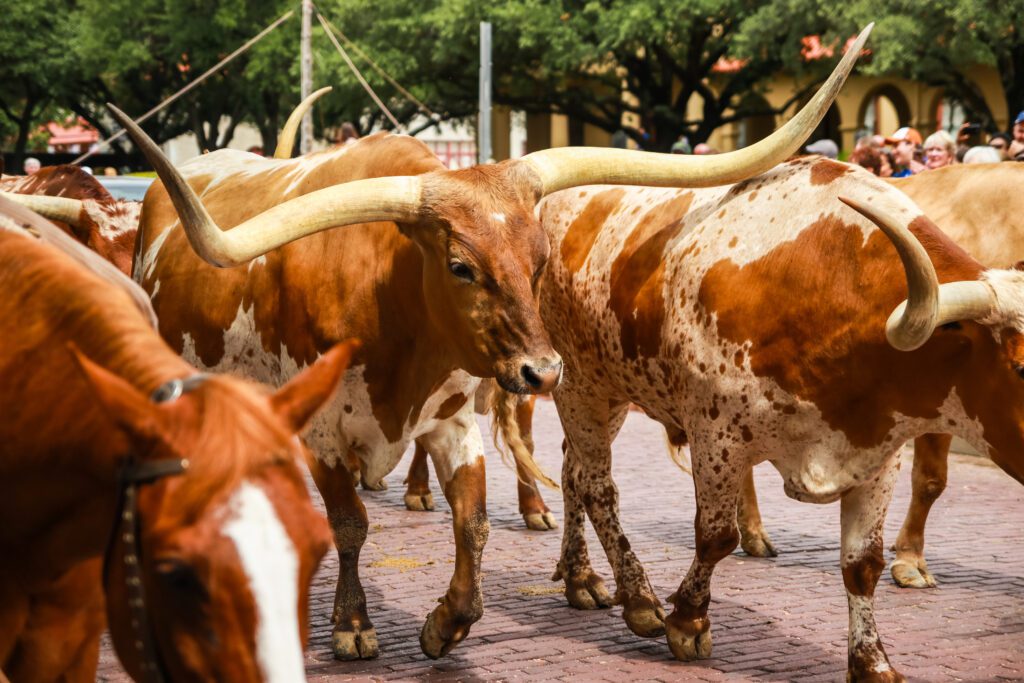
Cattle Roamed the Open Range
By the mid-nineteenth century, the United States had acquired most of the western territories through treaties and acquisitions. Colonists from the eastern or southern parts of the U.S. and immigrants from Europe flooded into the western frontier in search of inexpensive land. Some of them captured the wild Texas long-horned cattle and founded ranches. Vast areas of grassland in the Texas, Oklahoma and Wyoming territories were declared open range where cattle were permitted to freely graze.
Since the cattle could wander over many miles of open range and mingle with the cattle of other ranchers, a system of identification was adopted. Every spring, each rancher conducted a “roundup” or gathering of his cattle, and all the new young calves were branded with the owner’s unique mark or “brand”. A calf would bear this identifying brand for its entire life. At the roundup, cowboys would gather the cattle, rope the new calves, quickly pin them to the ground and apply the brand.
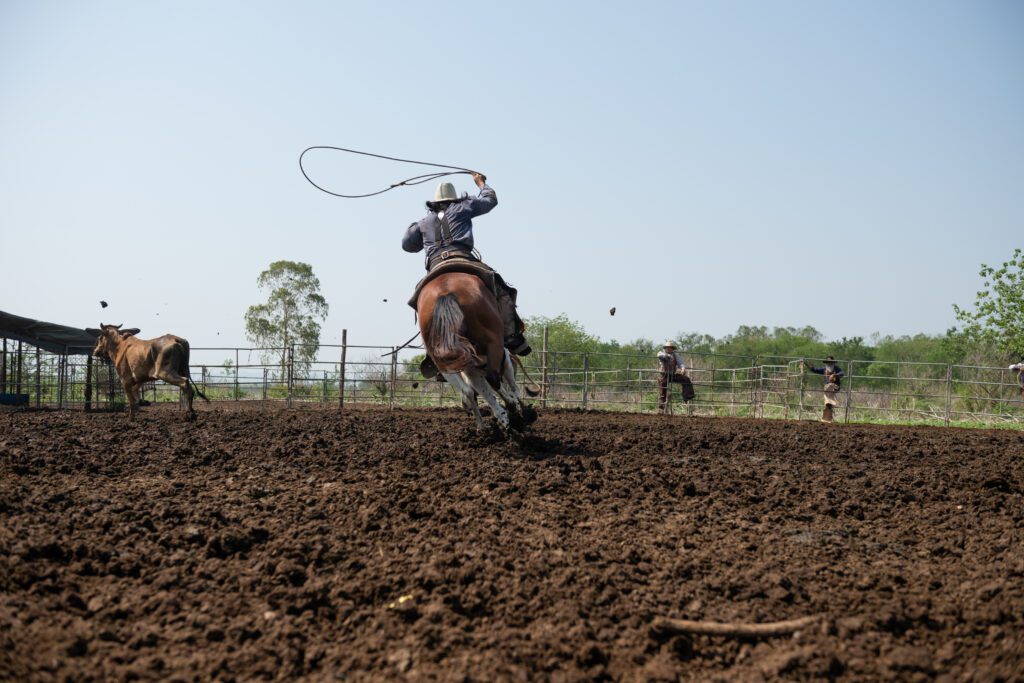
Ranchers jealously guarded their herds of cattle from thieves commonly known as “cattle rustlers”. Justice was swift and harsh for anyone caught stealing cattle or altering a brand. A rustler was often tried and executed immediately upon being caught. Cowboys guarded the cattle on the open range and sometimes pursued cattle rustlers.
Civil War Cowboy Shortage
At the middle of the eighteenth century, the country was sharply divided. The southern states had an agrarian economy that was heavily dependent of the labor of African slaves. Southerners zealously guarded their traditional way of life. The northern states had a highly industrialized economy that did not depend on slave labor. Northerners actively promoted the abolition of slavery. The western territories were divided on the question of slavery. In 1861, this dissention erupted in a conflict that became known in the USA as the Civil War. Men from all over the northern and southern states as well as the western territories flocked to join the Union or Confederate armies.
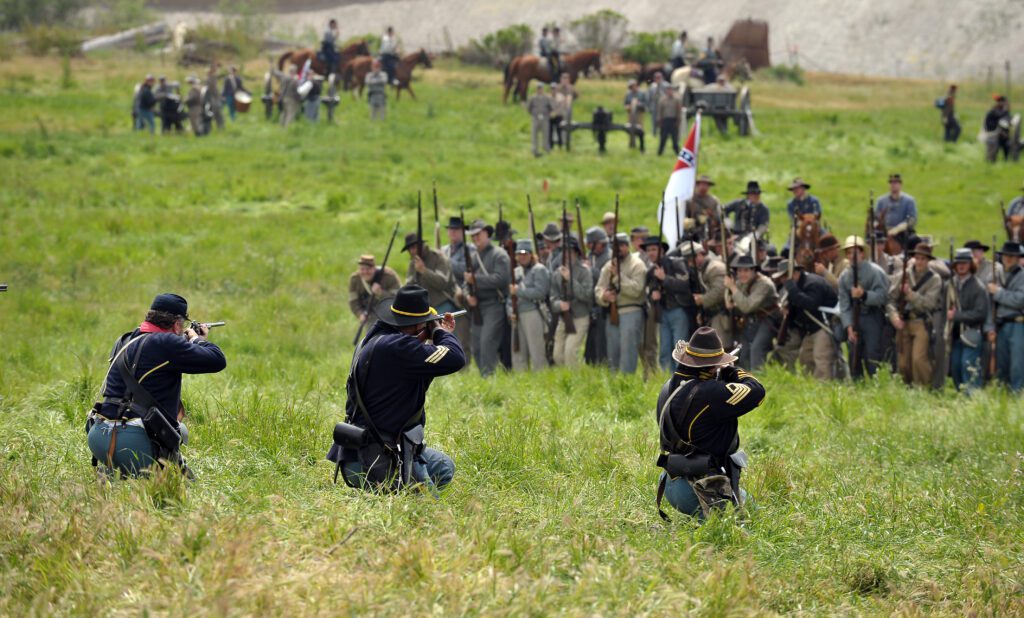
For nearly four war-ravaged years, the western ranches were deprived of young workers to handle their cowboy tasks such as branding the cattle or driving the cattle to market. By the end of the conflict, great herds of unbranded cattle with no designated owners were populating the open ranges of the western territories. It has been estimated that at least four or five million unbranded cattle roamed the open ranges in Texas.
In 1865, there was a great demand for beef on the eastern coast of the US where supplies of cattle were severely depleted from the recently ended Civil War. Meanwhile, there was a plentiful supply of cheap cattle in Texas and other southwestern territories. Texas cattle ranchers and entrepreneurs began hiring many cowboys to round up and brand the unclaimed cattle and to move them to the eastern markets. Unfortunately, most of the Texas rangelands were isolated from any easy transportation to the east.
The Chisolm Trail and Goodnight – Loving Trail
In 1867, a cattle trail was established from the Red River in northern Texas, across the Indian Territory, now known as Oklahoma, to Abilene Kansas and the new railroad line to the east. This route became known as the Chisolm Trail. Later, another route from West Texas to Denver Colorado became known as the Goodnight-Loving Trail. This meant that Texas cattle must be driven or walked 1000 miles or more to market. Since cattle can move no more than ten miles per day without losing weight, an average cattle drive from Texas to Abilene, Wichita or Dodge City in Kansas lasted nearly four months.
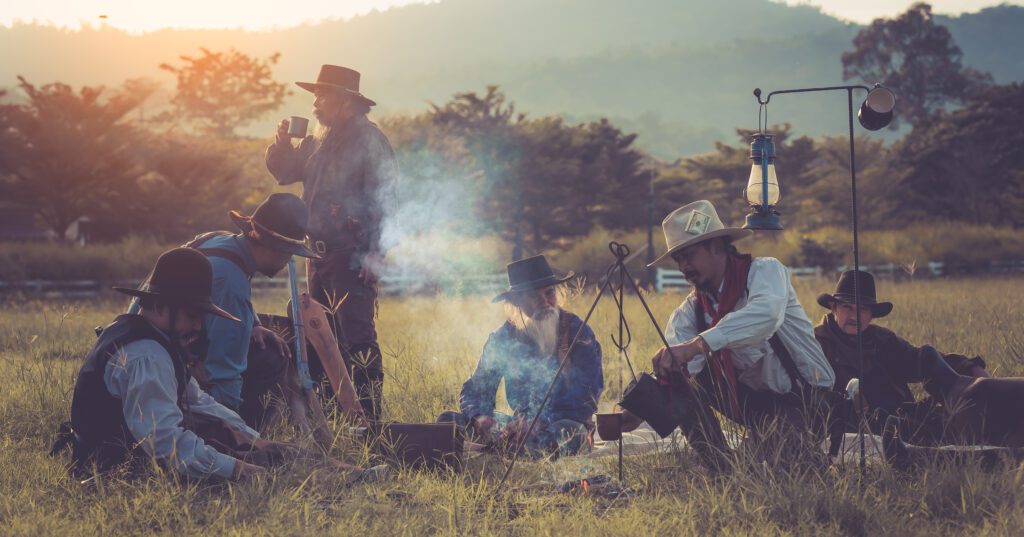
Cattle dealers in Texas would hire a trail boss, a cook, several horse wranglers and twenty to forty drovers or cowboys to drive a herd of several thousand cattle north to market. They typically hired the sons of local farmers, Spanish speaking Tejanos, Native American Indians and freed African American slaves. The average cowboy was only 14 to18 years old.
On the trail, cowboys worked from sunrise to sunset and often through the night. They slept under the stars, ate their meals around a campfire and lived in the saddle. They were away from home for six months at a time. It was hard, dirty work and often dangerous.
Ten to Twelve Hours in the Saddle
On a typical day, a cowboy would awaken at sunrise and eat a hearty breakfast of freshly baked biscuits and bacon washed down with plenty of strong black coffee. He would wrap a couple of biscuits in his kerchief for an in-the-saddle lunch and fill his canteen with water. A cowboy would remain in the saddle for ten or twelve hours moving the herd ever northward. He would go through three or four horses a day pausing only to exchange his tired mount for a remount from the wranglers. By evening, they would reach the next campsite and “The Old woman”, as the cook was often called, would serve a hearty meal of stewed meat, beans, canned fruits and freshly baked biscuits accompanied by gallons of strong black coffee. After the meal, the cowboys would wrap themselves in their blankets and “bed down” around the campfire with nothing but their saddles as pillows.
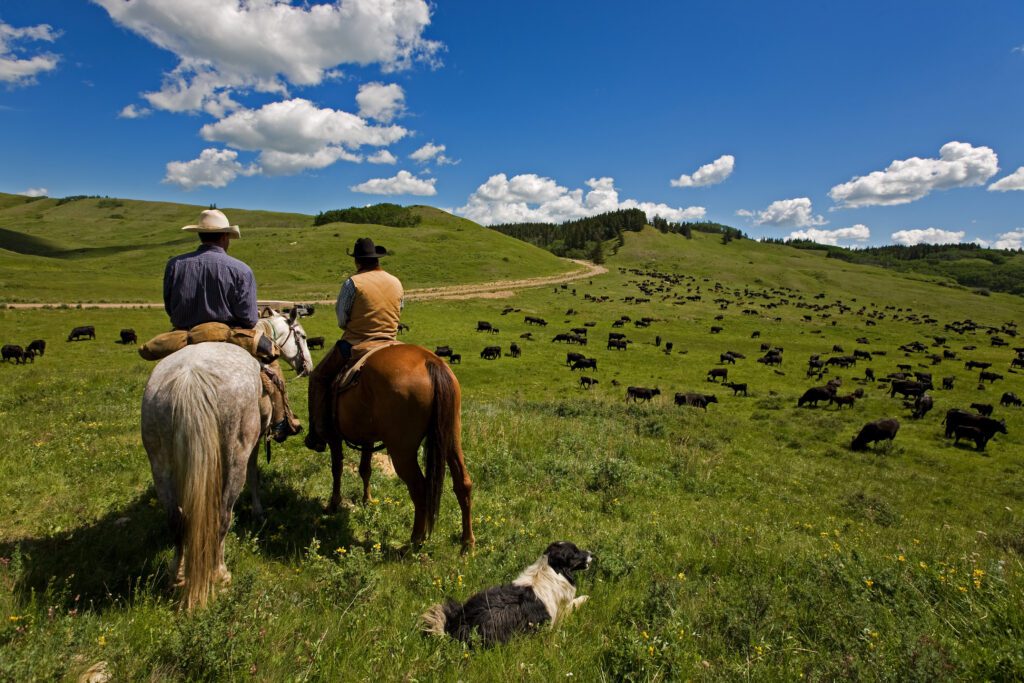
The cowboys would take turns riding “watch” on the herd throughout the night. Usually, four cowboys would slowly circle the herd to keep it contained and to guard against predators or rustlers. It was widely known that the sound of human voices and especially music tended to calm the cattle, so the cowboys on watch would usually sing as they rode. Throughout the night, the low moans of cattle and the high melodious ballads of the cowboys would punctuate the solitude of the lonesome prairie.
The First Chuck Wagon
By the 1870’s, cattle drives were delivering millions of cattle to market. There was great competition among the trail bosses in recruiting the best cowboys. Colonel Charles Goodnight, co-founder of the Goodnight-Loving cattle trail, noticed that cowboys preferred working on the trail drives with the best cooks. He purchased a war-surplus munitions wagon that was sturdily built and able to withstand rough overland travel, and had a “trail kitchen” constructed on the back. This new mobile kitchen proved so popular that nearly every trail boss and rancher in the west began to copy it. People called it the “Chuck Wagon” in honor of its inventor. It soon became the standard trail kitchen for cattle drives and roundups.
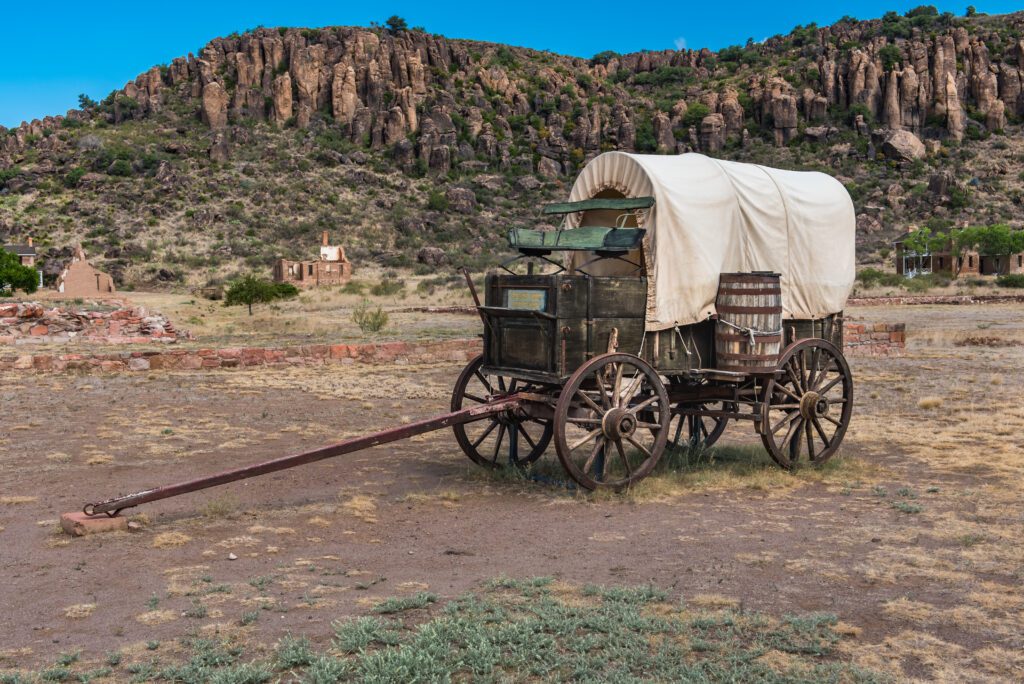
When the cattle drive reached its destination in Abilene, Dodge City, Wichita or one of the other “cattle towns”, the trail boss would sell the herd and pay the cowboys for their several months of hard work. The cowboys, with their pockets full of money, found many diversions to entertain them in the wild cattle towns. Whiskey, gambling and wild women were readily available to part them from some of their wages. Naturally, disturbances, fights and gun battles were common occurrences. After a few days of celebration, the cowboys faced a 1000-mile (1600 km) ride back to their homes in Texas.
End of an Era
By the end of the nineteenth century, the railroads penetrated most of the more inaccessible parts of the southwest. It became unnecessary to drive cattle long distances to market. The era of the great cattle drives had come to a conclusion. Today, trucks as well as railroads transport cattle, so cattle drives are truly a relic of the past. Some ranches in the west still host old-fashioned cattle drives in remembrance of the great drives of old. Some Dude Ranches still hold mini cattle drives where you can participate.
Additional Resources
The Chisholm Trail Website and Heritage Center, located in Duncan, Oklahoma, has lots of great information about this trail.
The Legends of America Website has detailed information about the history of the Goodnight – Loving Trail.

